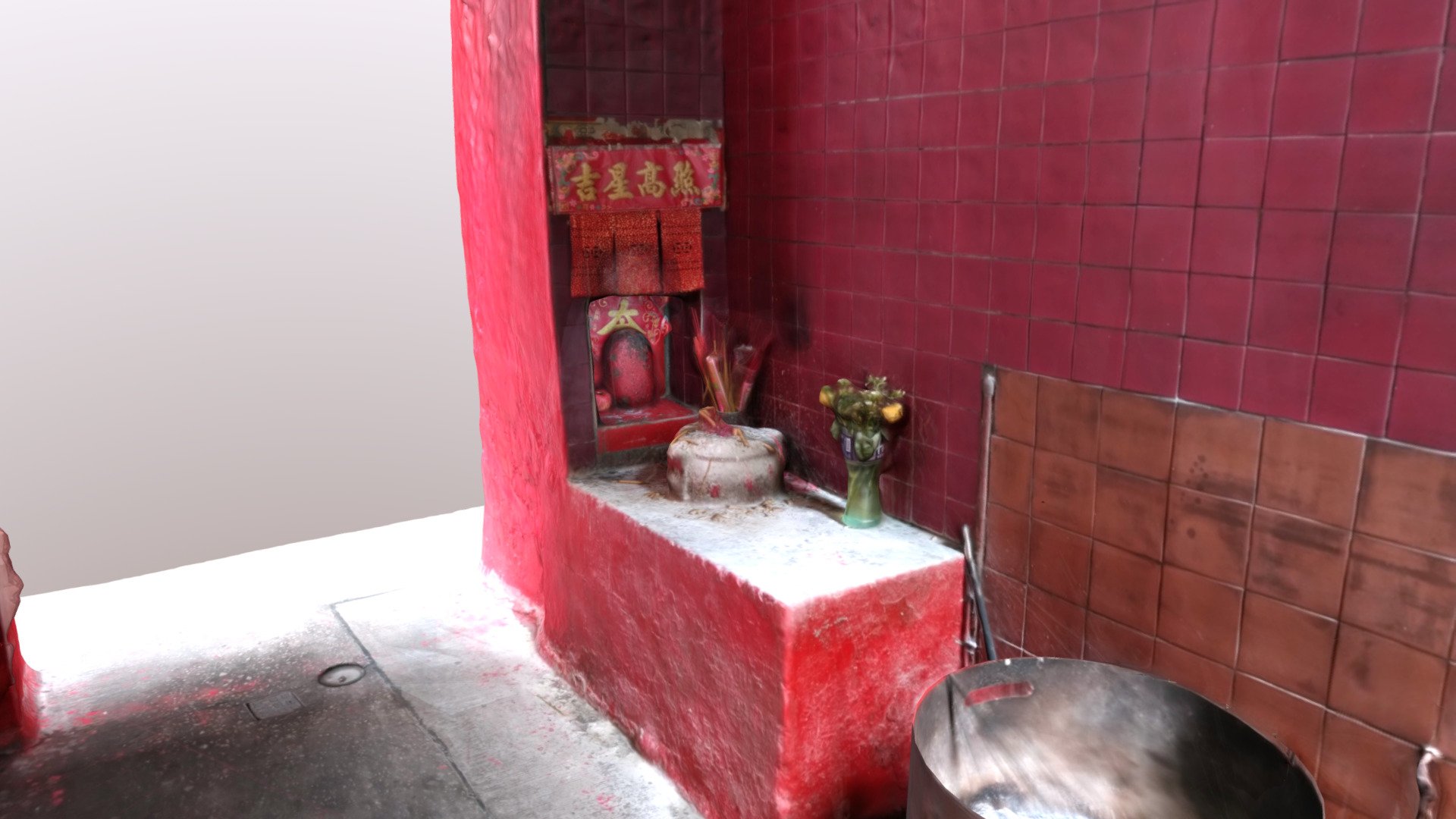
土地公(吉慶二圍)
sketchfab
In the past, streets like Jiqing Alley and many other parallel lanes were like fishermen throwing out a thin net into the sea. Only wide enough for people to pass through, these narrow alleys inherited from beachside shantytown staircases had houses tightly packed together on both sides, a reflection of the community's solidarity in the fishing industry. During the Qing dynasty's Tongzhi period, the private ferry pier - Jiqing No. 1 and No. 2 - which was filled with sand to make it flat, was initially designed to bring new prosperity to people living on land. Unfortunately, the roads formed by this "T" shaped pier turned out to be a thorn in the side of the city - the outer edge of the pier's fishing net style dock convenient for ships to anchor, while the inner side best suited to avoid wind and waves, making the most use of the shore. This was originally an efficient design followed by Road Ring Pier and Royal No. 1 Pier, but after landing it was destined to become a den of thieves - even if only one spot remained unconnected, Jiqing No. 2 and Men Guan Alley each had only one gap in their walls, long-term planning had been limited to a dream that had never come true, development space being locked up by wooden houses.
With this file you will be able to print 土地公(吉慶二圍) with your 3D printer. Click on the button and save the file on your computer to work, edit or customize your design. You can also find more 3D designs for printers on 土地公(吉慶二圍).
